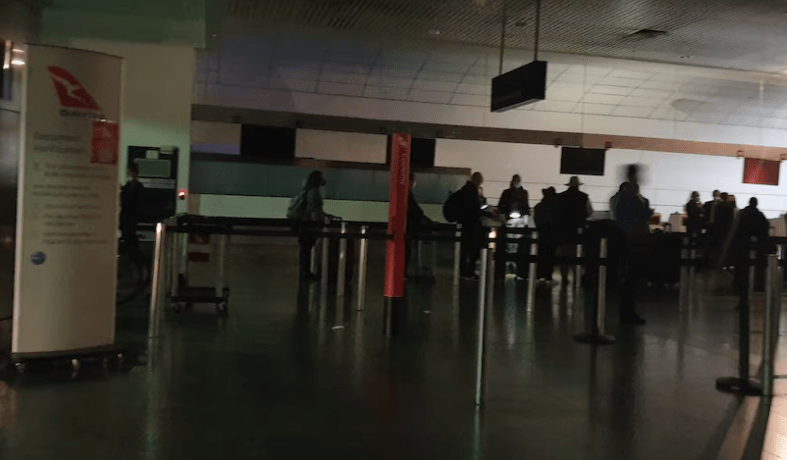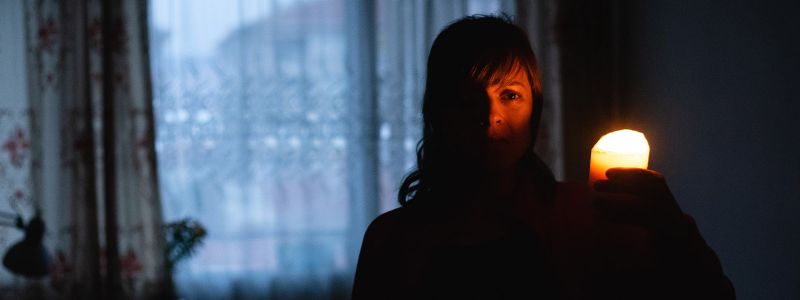Routine power rationing (aka ‘demand management’) and statewide blackouts are the natural consequence of attempting to run on sunshine and breezes. There is not a single example, anywhere in the world, of a country or state that runs exclusively on wind and solar. Those pretending to do so are now smacking headlong into a reality that only a deranged cult could ignore. And a deranged cult it most certainly is, as Nick Cater explains below.
Unaffordable green dream blacked out by reality
The Australian
Nick Cater
19 February 2024
When Craig Emerson has finished working out how much Woolies is gouging us for a litre of milk, perhaps he might turn his attention to the exorbitant price of electricity.
The Prime Minister’s price-gouging tsar might ask why energy companies were cashing in on the misery of Victorians last Tuesday by charging up to $2225.50 for a MWh of electricity.
Origin Energy chief executive Frank Calabria joined a conference of investors last week to announce underlying profits of $747m for the first half of the year, up from $44m a year earlier. Origin had grabbed a share of Tuesday afternoon’s bonanza by cranking up its gas-peaking plant at Mortlake.
Profiteering, raising prices at times of scarcity or emergency, would be frowned upon in other circumstances. Not in the National Electricity Market, however, where the fluctuating five-minute spot price balances supply and demand 24 hours a day.
Without it, we could expect many more unserved energy events, as the Australian Energy Market Operator initially described the collapse of half of Victoria’s electricity grid, leaving 540,000 customers powerless, many of them for days.
Like soldiers, doctors and others who run a daily risk of messing up people’s lives, the energy business has its dehumanising euphemisms to describe the things that cause collateral damage or adverse events.
On Tuesday, 90,000 customers were caught in friendly fire when the energy operator deliberately cut their power. The load shedding was vital to cover the drop in supply caused when six giant transmission towers on the state’s main 500kV transmission line buckled in high winds, knocking Victoria’s largest generating plant offline.
Why a break in the line near Geelong would cause the safety switches to trip at Loy Yang, 230km away, is one of life’s mysteries. It’s like asking how a butterfly flapping its wings in Brazil can start a tornado in Texas.
Weather and energy grids are chaotic systems where fixed laws govern complex interactions and feedback loops but lead to seemingly random outcomes. As the late Australian scientist Robert May once said: “Simple models can help us understand complex systems, but they are not a substitute for understanding.”
That’s why a prediction that the average household energy bill will fall by $275 over three years by installing more renewable energy should have been treated with a bucket of salt, even if, as Anthony Albanese claims, it was based on the most ambitious modelling on anything by any opposition party in the 120-year history of the commonwealth.
It is why you can’t draw up a grand plan for a carbon-free electricity grid on a whiteboard in Sydney and expect it to work.
The task of grid engineers is not to design the perfect system but to manage risk. Their task does not stop when they’ve linked enough generators to supply the expected demand. They should follow the example of John Bradfield, who over-engineered the bejesus out of the Sydney Harbour Bridge, which today supports a load he might not have imagined.
The collapse of the steel towers on Victoria’s main transmission line is irrefutable evidence our current transmission network needs upgrading. We should be patient before rushing to build another 10,000km of transmission lines before we’ve found the money to give the 45,000km of lines in operation the Bradfield treatment.
We should review the costings and technical specifications of the ones we plan to build. If we want them to last at least 50 years, underground cables may be cheaper in the long run.
The over-engineering imperative also applies to generation. The relatively stable East Coast Grid that operated reliably before renewables came along had abundant excess capacity from coal generation.
There was no need to synchronise DC power from wind and solar plants so fewer things could go wrong. Transmission line runs were shorter and easier to manage. Inter-connectors played an ancillary role, keeping prices low by increasing competition and balancing supply between states. They were never designed to run at full bore, as the interconnectors do now for growing periods. The 2016 blackout in South Australia occurred after storms damaged transmission lines, and the Heywood interconnector with Victoria became overloaded.
Energy Minister Chris Bowen thinks the answer is to add more intermittent generation and hope we’ll have enough batteries installed in time to save our bacon when the sun fades, and the wind drops. Yet battery boosters should take a reality check. The NEM supplied 3.2TWh of electricity to customers in the last seven days. A mere 7.7GWh, or 0.24 per cent, was supplied from batteries. A little over two-thirds (64.4 per cent) came from coal.
This raises the question: How will the grid be managed if Australia’s largest generator, Origin’s coal-fired plant at Eraring, NSW, closes next August as the company says it will?
“Running baseload these days is just getting more and more difficult,” Calabria said last week, noting low prices particularly in the middle of the day, when wind and solar are eating coal’s lunch.
No problem, say the boosters. “Analysts have said that there is no need for Eraring to stay open, given the number of new renewable and battery storage projects currently under construction,” wrote the editor of Renew Economy last week.
Really? What analysts? When? Would they like to show us their modelling? Any government that bases its decisions on that kind of advice should be prepared for a very wild ride. Which is why NSW Labor Premier Chris Minns will do almost anything to keep Eraring open.
The NSW government has gone to drastic lengths to ensure the state’s remaining coal-fired power stations remain supplied with coal. Coalminers are obliged by law to reserve 10 per cent of their output for domestic generators and are forbidden from charging more than $125 per tonne.
On the one hand, the government gears policy to shut the coal generators out by privileging renewables in the NEM, pushing spot prices negative in the middle of the day. It subsidises unreliable, intermittent generators by allowing them to sell renewable energy certificates, so they can operate profitably even if spot prices fall below zero.
On the other hand, governments are using a mixture of pleading and coercion to keep coal-power stations open because even the starry-eyed people at AEMO know the chance of blackouts will increase in NSW if Eraring closes.
One hates to be the bearer of bad news to the Tesla drivers of Mosman, but around 80 per cent of your electricity on Saturday night was produced from black coal, more than a third of it from Eraring.
The Australian



Maybe John Bradfield had taken a page out of Washington Roeblings book. When he was building the Brooklyn Bridge between 1870 and 1883, he was asked how he knew how strong to make it. He said “I calculate what I can and then make it six times stronger.”
There’s a limit to how far AC can be transmitted, due in part to the Ferranti Effect: Voltage increases with distance, with a maximum at one quarter wavelength. Current gets out of phase with voltage because of inductance and capacitance The limit with underground lines is less than with towers because the capacitance between conductors is greater. This can be reduced by putting them farther apart, but this increases the cost. There’s no similar problem with DC power, but this increases costs at both ends. There is no free lunch, especially not for transmitting intermittent power from behind the back of nowhere to where it’s needed.
The red flag was flying years ago as you can see from this post in 2018.
https://stopthesethings.com/2018/11/27/blackouts-beckon-calm-weather-sunset-deliver-chaos-in-renewables-obsessed-australia/
Jo Nova was sounding the alarm, and after Hazelwood power station in Victoria closed in 2017 AEMO issued a warning that we did not have the reserve capacity that we needed to get over critical periods like the heatwave of Jan 2019.
We were lucky after Hazelwood because there was no more loss of capacity until Liddell closed last year. Summers were mild and demand did not increase greatly due to deindustrialization as power-intensive firms went out of business or moved overseas.
We are at a tipping point. https://newcatallaxy.blog/2023/07/11/approaching-the-tipping-point/